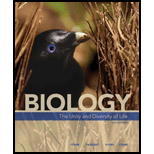
Concept explainers
To determine: The risk that someone without hypertension at age 30 will have a heart attack by age 85.
Introduction: High blood pressure or hypertension is the high force exerted by the blood against the walls of blood vessels. It can lead to many severe complications like increasing the risk of stroke, atherosclerosis, heart diseases, and death. The normal range of blood pressure is 120/80 mmHg, where the first number represents the systolic pressure and the second number represents the diastolic pressure.
Explanation of Solution
According to the study based on the effect of hypertension, the medical research implies the fact that an individual without hypertension at the age of 30 will have 4 percent chance to develop a heart attack by the age of 85. There are no symptoms or signs appear during the early stage of life. However, symptoms or signs may appear during the late period of life.
The risk that someone without hypertension at age 30 will develop a heart attack by age 85 is about 4 percent.
To find: The comparable risk for someone with hypertension at age 30.
Introduction: High blood pressure or hypertension is a medical condition where the blood pressure in the arteries is persistently elevated. Hypotension is the medical term for low blood pressure. Age, body weight, sex, food habits, alcoholism, drug addiction, and physical inactivity are some of the major causes for this condition to occur.
Explanation of Solution
The risk of hypertension at age 30 is about 7 percent. The chance for cardiac arrest is very high for the people who had hypertension at the age of 30 itself. The chance for cardiac arrest is very less in people with no hypertension at the age of 30. This indicates the fact that maintaining a healthy diet and regular exercise would help to get rid of hypertension at a young age. As a result, they will not develop heart-related issues in their late period of life.
The risk that an individual without hypertension at age 30 will develop a heart attack by age 85 is only about 4 percent, while for the ones with hypertension at age 30 is about 7 percent.
Want to see more full solutions like this?
Chapter 36 Solutions
Biology: The Unity and Diversity of Life (MindTap Course List)
- Can you described the image? Can you explain the question as well their answer and how to get to an answer to an problem like this?arrow_forwardglg 112 mid unit assignment Identifying melting processesarrow_forwardGive only the mode of inheritance consistent with all three pedigrees and only two reasons that support this, nothing more, (it shouldn't take too long)arrow_forward
- Oarrow_forwardDescribe the principle of homeostasis.arrow_forwardExplain how the hormones of the glands listed below travel around the body to target organs and tissues : Pituitary gland Hypothalamus Thyroid Parathyroid Adrenal Pineal Pancreas(islets of langerhans) Gonads (testes and ovaries) Placentaarrow_forward
- What are the functions of the hormones produced in the glands listed below: Pituitary gland Hypothalamus Thyroid Parathyroid Adrenal Pineal Pancreas(islets of langerhans) Gonads (testes and ovaries) Placentaarrow_forwardDescribe the hormones produced in the glands listed below: Pituitary gland Hypothalamus Thyroid Parathyroid Adrenal Pineal Pancreas(islets of langerhans) Gonads (testes and ovaries) Placentaarrow_forwardPlease help me calculate drug dosage from the following information: Patient weight: 35 pounds, so 15.9 kilograms (got this by dividing 35 pounds by 2.2 kilograms) Drug dose: 0.05mg/kg Drug concentration: 2mg/mLarrow_forward
- A 25-year-old woman presents to the emergency department with a 2-day history of fever, chills, severe headache, and confusion. She recently returned from a trip to sub-Saharan Africa, where she did not take malaria prophylaxis. On examination, she is febrile (39.8°C/103.6°F) and hypotensive. Laboratory studies reveal hemoglobin of 8.0 g/dL, platelet count of 50,000/μL, and evidence of hemoglobinuria. A peripheral blood smear shows ring forms and banana-shaped gametocytes. Which of the following Plasmodium species is most likely responsible for her severe symptoms? A. Plasmodium vivax B. Plasmodium ovale C. Plasmodium malariae D. Plasmodium falciparumarrow_forwardStandard Concentration (caffeine) mg/L Absorbance Reading 10 0.322 20 0.697 40 1.535 60 2.520 80 3.100arrow_forwardPlease draw in the missing answer, thank youarrow_forward
 Biology: The Unity and Diversity of Life (MindTap...BiologyISBN:9781337408332Author:Cecie Starr, Ralph Taggart, Christine Evers, Lisa StarrPublisher:Cengage Learning
Biology: The Unity and Diversity of Life (MindTap...BiologyISBN:9781337408332Author:Cecie Starr, Ralph Taggart, Christine Evers, Lisa StarrPublisher:Cengage Learning Biology: The Dynamic Science (MindTap Course List)BiologyISBN:9781305389892Author:Peter J. Russell, Paul E. Hertz, Beverly McMillanPublisher:Cengage Learning
Biology: The Dynamic Science (MindTap Course List)BiologyISBN:9781305389892Author:Peter J. Russell, Paul E. Hertz, Beverly McMillanPublisher:Cengage Learning Human Physiology: From Cells to Systems (MindTap ...BiologyISBN:9781285866932Author:Lauralee SherwoodPublisher:Cengage Learning
Human Physiology: From Cells to Systems (MindTap ...BiologyISBN:9781285866932Author:Lauralee SherwoodPublisher:Cengage Learning





